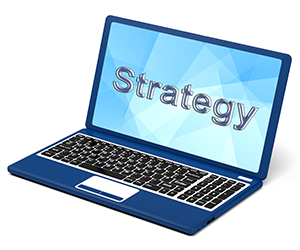By Janie Warner
Unprecedented. Crisis mode. Layoffs. Furloughs. Business continuity.
We are living in an unusual business cycle. One that affects not only how our company operates, but how we go about our personal business in our everyday lives. Everyone is stressed, worried and frustrated. Because we don’t have a firm end date, we all feel off kilter and looking for some direction. We may not believe it, but this will pass.
One of the best ways to give your work direction (and to stem that anxious feeling that you are just treading water) is to start looking at your HR strategy for the rest of the year. That great strategic plan you had in the fall of 2019 has been dealt a serious blow. It’s time to re-evaluate and re-align your strategic focus and goals to address the business challenges of 2020.
A few things to consider:
- What will your business look like once the crisis has abated?
- Will your products and services be in extreme demand – or will there be a gradual return to pre-COVID 19 production?
- Within that vision, what will the staffing needs be?
- Will your organization immediately bring everyone back to work? Or, will it be a time of “right-sizing” in order to strategically align staff numbers to the new business model?
- Are you prepared for the reality that some – perhaps many – of your needed/skilled workers may not desire to return to work at your company?
All of these considerations are important and as an internal business partner, Human Resources can and should be leading these conversations now rather than having to be reactive once the world rights itself and starts the journey forward to a new/different business reality.
Once some of these questions have been answered, it will be time to start focusing on the future and preparing. Having plans in place to address the concerns will alleviate some of the stress that will naturally occur once businesses gear up and go back to work.
Here is just a sampling of some things to start planning NOW:
- Working remotely may have not been encouraged in the past but quickly has become a reality during the pandemic. Look at what worked well and what didn’t and be prepared for employees to ask for continued WFH (work from home) solutions once the crisis is over.
- Be prepared for an onslaught of vacation requests – it may technically be a short summer because of travel restrictions for the traditional vacation months. Have a plan in place to address business continuity while still allowing employees the respite they will probably need.
- If you had to furlough or lay off workers, think ahead to your staffing concerns if employees choose not to return.
- Put a plan together for a gradual return to normal. Day one of the return will not be business as usual. What will that look like?
- How will you say thank you? Plan now. Work may be extra intensive once restrictions are removed. How will you incentivize and reward employees for putting in the extra effort once they return to the workplace?
There are probably several hundred (at least) employee related considerations that will need attention as we move further into the year. The imperative at this point is to: FOCUS – EVALUATE – ALIGN STRATEGIES – SET GOALS.
Jeff Boss, author, entrepreneur and former Navy Seal writes: “Having a clear, compelling goal mobilizes your focus toward actionable behavior. In other words, goal setting should motivate you.”
Make your plans – plan your goals – and work toward achievement. It will make today’s confusing world seem a little less scary. And that is definitely a good thing.

Janie Warner, SHRM-SCP
National Practice Leader/HR Advisory
McGriff Insurance Services,
Inc.
janie.warner@mcgriffinsurance.com
www.mcgriffinsurance.com
